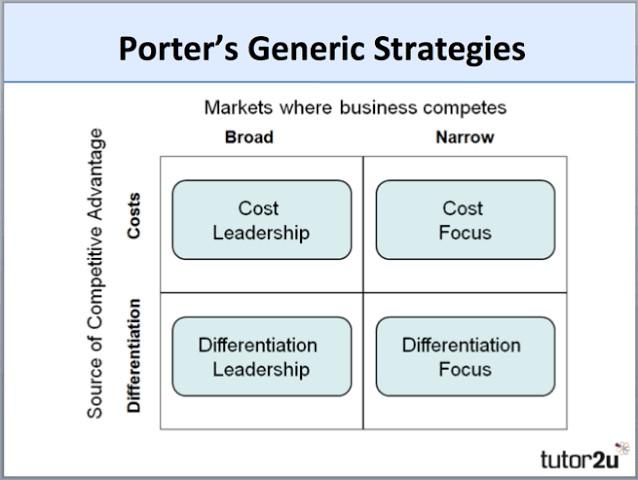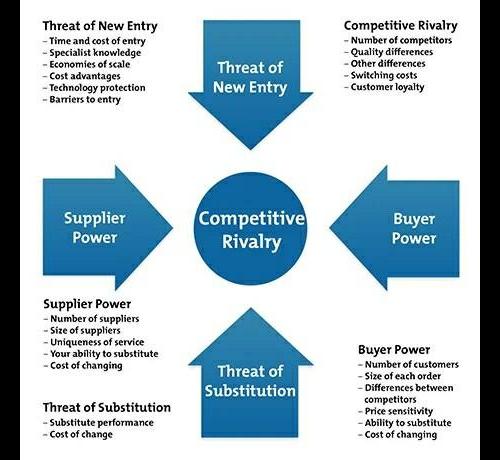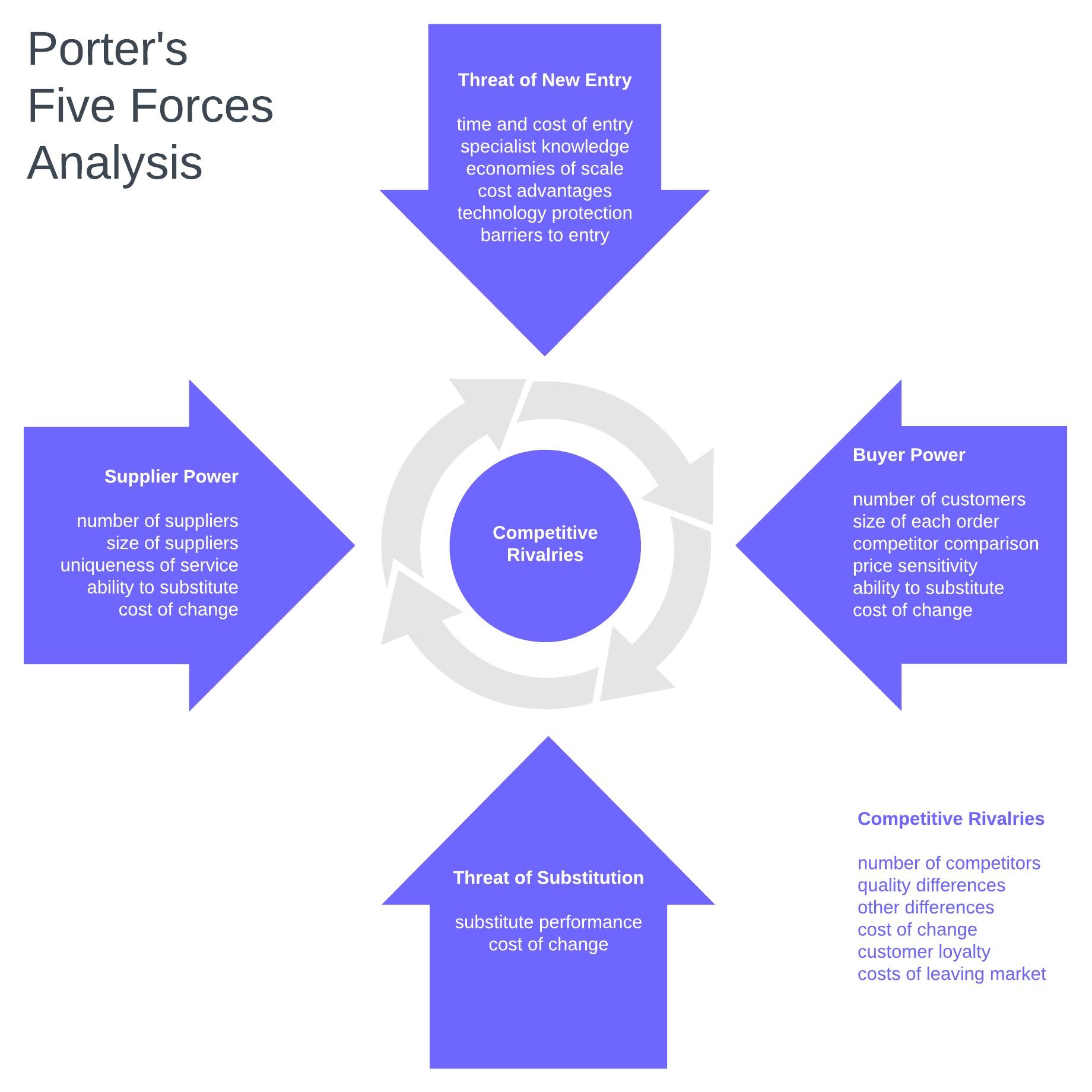Time management is very much important in IIT JAM. The eduncle test series for IIT JAM Mathematical Statistics helped me a lot in this portion. I am very thankful to the test series I bought from eduncle.
Nilanjan Bhowmick AIR 3, CSIR NET (Earth Science)- UGC NET
- Commerce
Michael porter competitive marketing strategy?
Michael Porter Competitive Marketing Strategy? What all factors does it include?
- 0 Likes
- 4 Comments
- 0 Shares
-
Priya gulani
![best-answer]()
Key Points Porter's Five Forces Analysis is an important tool for understanding the forces that shape competition within an industry. It is also useful for helping you to adjust your strategy to suit your competitive environment, and to improve your potential profit. It works by looking at the strength of five important forces that affect competition: Supplier Power: the ability of suppliers to drive up the prices of your inputs. Buyer Power: the strength of your customers to drive down your prices. Competitive Rivalry: the strength of competition in the industry. The Threat of Substitution: the extent to which different products and services can be used in place of your own. The Threat of New Entry: the ease with which new competitors can enter the market if they see that you are making good profits (and then drive your prices down). By thinking about how each force affects you, and by identifying its strength and direction, you can quickly assess your position. You can then look at what strategic changes you need to make to deliver long-term profit. see for help
![cropped3504360930183420916.jpg]()
![cropped7608057582875405971.jpg]()
-
Rucha rajesh shingvekar
https://www.slideshare.net/mobile/hitaksha/porters-five-forces-model-of-competitive-analysis
Do You Want Better RANK in Your Exam?
Start Your Preparations with Eduncle’s FREE Study Material
- Updated Syllabus, Paper Pattern & Full Exam Details
- Sample Theory of Most Important Topic
- Model Test Paper with Detailed Solutions
- Last 5 Years Question Papers & Answers
Sign Up to Download FREE Study Material Worth Rs. 500/-





















Shahrukh Khan![best-answer]()
Michael Porter’s Big Ideas Before Porter, Igor Ansoff dominated thinking on corporate strategy. His approach boiled down to choosing your market, matching your resources to meet the market’s demand, and then improving your competitiveness to increase your market share. Michael Porter did not reject these ideas. Rather, he opened them out, approaching strategy from the perspective of the whole industry and then, later, as a national endeavour. He considered that earlier strategic thinking had become confused with simple (ahem) operational effectiveness. He argued that improving operational processes merely levelled out competitors, rather than giving them a differentiation that led to competitive advantage. Let’s survey five big ideas that Michael Porter has given us. All remain core parts of any business education. Primary and Secondary Activities, and the Importance of the Value Chain Porter divided corporate activities into Primary Activities and Secondary Activities. Primary Activities are the value chain from inbound materials to production operations, to outbound goods and their distribution, to the ‘far end of the value chain‘, marketing and sales, to customer care and after sales services. Here, Porter argued, lay the ground for competitive advantage. The key task is to integrate these into one value chain. Secondary Activities are the business support functions, like IT, HR, Procurement, Facilities Management, and Finance. These cannot create competitive advantage They can merely enable efficiency, or act as a drag on the business. Porter’s Five Forces Corporations sit in a competitive environment, which creates five forces. Michael Porter's Five Forces Michael Porter’s Five Forces Porter’s current view is that a company must aim to use these forces to re-cast the rules of its industry, in its own favour. Sources of Competitive Advantage, and the Three Competitive Strategies Porter argued that there are two sources of competitive advantage: Cost – being able to sell the same products or services at a lower price than your competitors, whilst maintaining profit margins Differentiation – being able to offer products and services which your customers want, but that your competitors cannot (yet) offer This leads him to his three competitive strategies: Cost leadership – build the capability to produce at a lower cost than anyone else Differentiation – find a new product or service, or enhance what you offer to make it different Niche focus – find a profitable niche, and dominate it Recently, we see competitors dominating their market with a fourth strategy, based on a third source of competitive advantage: deep loyalty. How does Apple dominate? Not by offering cheaper products, certainly. Although their supply chain efficiencies mean that their margins are exceptional. And, some would argue, not by differentiation. Whilst they often lead for a short time here, their rivals also innovate, and certainly catch up quickly. Is there much a Mac can do that a PC cannot? Is there much an iPhone can do that a Samsung cannot? And a company with as many and varied customers as Apple cannot truly be said to serve a niche. No, I believe the source of Apple’s current dominance is largely the loyalty of its customer base, built on historic innovation, differentiation in multiple niches, and a reputation for excellence. Diversification Like Ansoff before him, Porter sees diversification as a shrewd strategy that spreads a corporation’s risk. This maybe through product development, or business acquisition. In deciding how to diversify, Porter proposes three tests: Does the new industry, product set, or niche offer attractive returns on investment? Is there the opportunity to build differentiation or cost leadership? Is the cost of entry proportionate to the likely returns? If not, the risks are too high. Does the acquisition or the new venture leave the parties better-off? This is basically Ansoff’s concept of synergy. The National Competitive Environment In The Competitive Advantage of Nations, Porter fully articulated a line of thinking that placed national conditions at the heart of corporate success. A strong home base with good infrastructure and healthy competition grows successful global companies. Porter’s Diamond Model sets out four factors that affect a nation’s industries. Michael Porter's Diamond Model